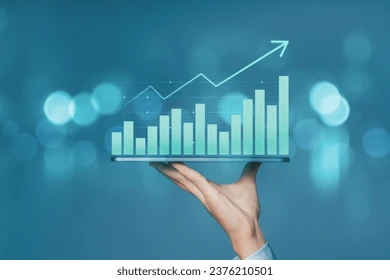As we move through 2025, the global economy is experiencing a complex but transformative phase. From AI-powered labor shifts to a new wave of green investments, understanding key economic trends can help businesses, investors, and policymakers adapt and thrive. Here’s a breakdown of the Top 10 Economic Trends of 2025 that are shaping the world’s financial future.
1. AI Integration into Labor Markets
Impact: Job transformation, not just replacement
Artificial Intelligence is no longer a buzzword—it’s a productivity engine. By 2025, over 40% of enterprises globally use AI tools to automate workflows and improve decision-making.
Key Insight: The focus is on reskilling rather than layoffs.
2. Inflation Stabilization
Impact: Gradual return to central bank targets
Inflation rates have begun to stabilize across the U.S., Europe, and Asia due to tighter monetary policy and declining energy prices.
Key Insight: Central banks are cautiously optimistic, holding interest rates steady in many regions.
3. Resilient Consumer Spending
Impact: Strong retail and service demand
Despite economic uncertainty, consumer spending remains high, driven by wage growth and the normalization of hybrid work culture.
Key Insight: Spending is shifting from goods to experiences and digital services.
4. Global Supply Chain Reinvention
Impact: Regionalization over globalization
The pandemic and geopolitical tensions have forced businesses to rethink supply chains. “Friend-shoring” and “nearshoring” are becoming the new normal.
Key Insight: Countries like Mexico and India are benefiting from supply chain diversification.
5. Digital Currency Advancements
Impact: Governments exploring Central Bank Digital Currencies (CBDCs)
2025 sees over 15 countries piloting or launching their own CBDCs, aiming to modernize payments and increase financial inclusion.
Key Insight: The digital yuan and e-euro are among the most advanced.
6. Green Investment Boom
Impact: Surge in climate tech and sustainable finance
Green bonds, carbon credit markets, and ESG funds are dominating financial news. Clean energy and sustainable agriculture are major beneficiaries.
Key Insight: Governments are tying subsidies and tax breaks to ESG benchmarks.
7. Tech Sector Recovery
Impact: Post-2022 correction gives way to new growth
After a rough patch in 2022–2023, tech stocks are rebounding as AI, biotech, and quantum computing become mature sectors.
Key Insight: Investors are looking for profitability, not just potential.
8. Youth Unemployment Challenges
Impact: Structural employment gaps in many countries
While automation has created high-skill jobs, entry-level employment remains a challenge for young workers, especially in developing economies.
Key Insight: Vocational training and public-private partnerships are key solutions.
9. Global Trade Realignment
Impact: Shift from Western-led trade to multi-polarity
2025 marks a pivot in global trade as emerging markets form new trade alliances, reducing reliance on legacy trade systems.
Key Insight: The RCEP (Regional Comprehensive Economic Partnership) is gaining momentum in Asia.
10. Real Estate Market Transformation
Impact: From ownership to flexible living
Urban housing markets are adapting to hybrid work, with more demand for co-living spaces, suburban rentals, and fractional ownership models.
Key Insight: AI is being used to predict real estate trends and pricing.
Conclusion
From automation and inflation stabilization to sustainable finance and trade realignment, 2025 is a pivotal year in global economics. These trends will redefine how we work, invest, and live. Staying informed is not just smart—it’s essential for navigating this evolving landscape.



